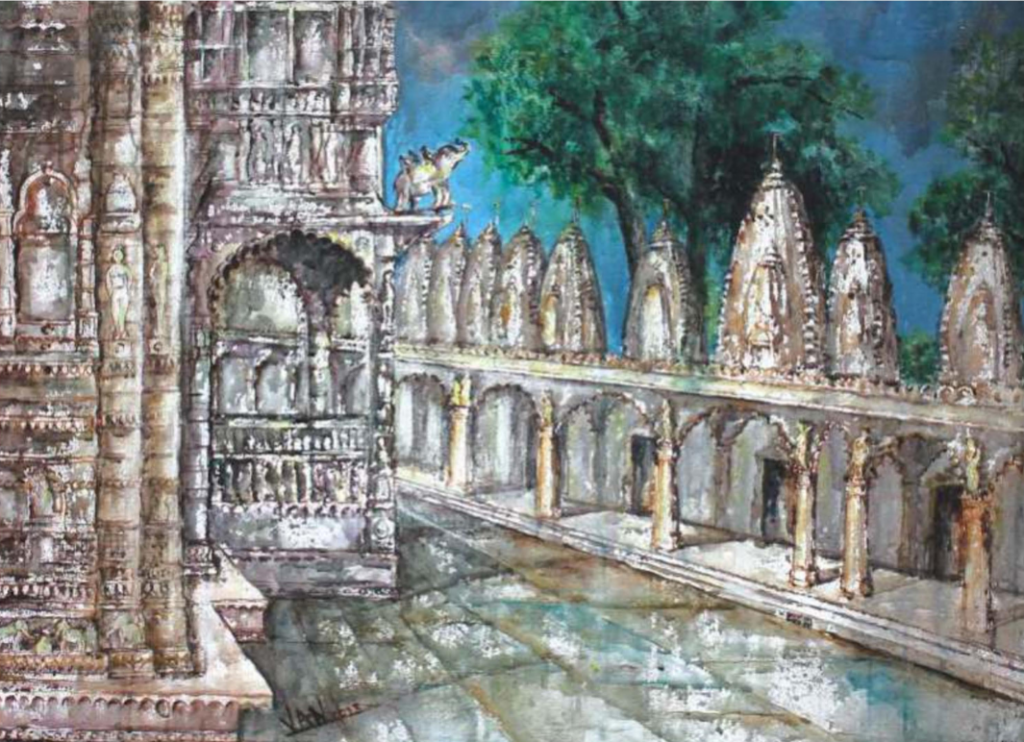Architecture is more than bricks, concrete, steel, and glass it is a dream given form, an idea turned tangible. The quote, "Architects translate dreams into structures that touch the sky," poetically captures the essence of the architectural profession. While its author may be unknown, its truth is universally recognized by those who envision, design, and …

Table of Contents
- The Dream Phase: Imagination Takes Flight
- From Abstract to Actual: The Design Alchemy
- The Architect as Storyteller
- Architecture and the Human Experience
- Cultural Context: Designing with Sensitivity
- Innovation: Dreaming of the Future
- Responsibility and Ethics
- Touching the Sky: Literal and Symbolic Heights
- Collaboration: Dreams Need a Village
- Architectural Education: Training the Dream Translators
- Challenges in Dream Translation
- Conclusion: Architecture as the Bridge Between Imagination and Reality
Architecture is more than bricks, concrete, steel, and glass it is a dream given form, an idea turned tangible. The quote, “Architects translate dreams into structures that touch the sky,” poetically captures the essence of the architectural profession. While its author may be unknown, its truth is universally recognized by those who envision, design, and build our world. Architects are visionaries who bring the intangible into the realm of the real, blending art and science to shape environments that elevate the human experience. In this essay, we will explore this idea in depth, through the lens of creativity, responsibility, cultural context, and the power of space to inspire.
The Dream Phase: Imagination Takes Flight
Before a single line is drawn or a brick is laid, architecture begins as a dream. Clients arrive with aspirations a house that feels like home, a museum that inspires reflection, a school that fosters growth, or a skyscraper that redefines a skyline. These dreams are abstract, emotional, and often sprawling in ambition.
Architects are the translators of this language of dreams. Through interviews, site visits, brainstorming, and countless iterations, they begin to decode what the client truly desires not just in terms of spatial requirements but in lifestyle, emotion, and symbolism. In this phase, imagination is the architect’s greatest tool. They must envision not just what is, but what could be.
From Abstract to Actual: The Design Alchemy
Once the dream is understood, the architect begins the transformative process of design. This is where vision meets logic. Architects must reconcile aesthetics with building codes, function with form, and budget with ambition. They become alchemists, balancing opposing forces to create harmonious structures.
The “sky-touching” nature of the quote is both literal and metaphorical. Architects design buildings that rise into the heaven’s skyscrapers like the Burj Khalifa or One World Trade Center but they also elevate our collective spirit. An architect’s design can uplift a community, reshape a neighborhood, and become a symbol of hope or identity.
The design phase involves careful consideration of:
- Site context and climate
- Materiality and sustainability
- Structural integrity
- Circulation and accessibility
- Aesthetic coherence
Each decision taken during this phase must honor the original dream while being grounded in the physical world. It is a delicate dance between the visionary and the practical.
The Architect as Storyteller
Architecture tells stories. From the ornate carvings of Gothic cathedrals to the minimalist precision of a Japanese tea house, buildings speak of culture, beliefs, and time. In translating dreams, architects must also become storytellers.
They embed narratives in every line and layer. The choice of a material might reflect a region’s heritage. The orientation of a window could capture a sacred sunrise. The arrangement of spaces might mirror traditional values or modern lifestyles. In this way, architects do not merely create spaces; they create meaning.
Consider the Sydney Opera House not just a performance venue, but a symbol of Australia’s creative spirit. Or the Fallingwater house by Frank Lloyd Wright, which tells a story of harmony between man and nature. These structures began as ideas, as dreams, and became enduring symbols of cultural expression.
Architecture and the Human Experience
What makes architecture profoundly powerful is its impact on people. Architects have the unique ability to influence how we feel, think, and behave through space.
A well-designed home provides comfort and safety. A school designed with natural light and flexible spaces can enhance learning. A hospital with thoughtful circulation and soothing interiors can aid healing. An office that promotes interaction and creativity can drive innovation.
Dreams, in this sense, are not just grand or fantastical they are human. They are rooted in the daily lives and aspirations of individuals and communities. Architects, through their work, give form to these desires, improving quality of life in subtle and significant ways.
Cultural Context: Designing with Sensitivity
Dreams are deeply shaped by culture. An architect working in India will encounter vastly different aspirations than one working in Scandinavia. Climate, history, traditions, and social structures all influence what a client dreams of.
Great architects are culturally sensitive translators. They understand the local language of architecture vernacular forms, indigenous materials, sacred geometries and weave it into modern expression. This approach ensures that the resulting structure is not only innovative but also authentic and rooted.
Consider B.V. Doshi’s work in India. His designs, from the Aranya Housing to IIM Bangalore, are not imported visions but interpretations of local needs, dreams, and conditions. His buildings feel familiar and revolutionary at the same time a rare quality that stems from deep contextual awareness.
Innovation: Dreaming of the Future
Architects are also futurists. While some fulfill immediate dreams, others imagine what society could become. They speculate, experiment, and push boundaries.
In this way, architecture becomes a tool of innovation and provocation. Conceptual projects like vertical forests, floating cities, or Mars habitats may seem fantastical, but they provoke critical conversations about sustainability, urbanization, and survival.
Firms like BIG (Bjarke Ingels Group) or MAD Architects constantly challenge norms, designing structures that blend nature and technology, past and future. These are dreams with ambition pushing us to think bigger, bolder.
Responsibility and Ethics
Translating dreams is not without its moral dimension. Architects must ask: Whose dreams are being realized? At what cost? Architecture has historically been a tool of power used to dominate, segregate, or erase. But it can also be a tool of empowerment.
Ethical architects seek inclusive design. They consider universal access, environmental impact, labor rights, and cultural preservation. They dream not just for the elite, but for the many.
Social housing, disaster relief shelters, community centers these are just as important as luxury towers or museums. In serving these needs, architects become custodians of societal well-being.
Touching the Sky: Literal and Symbolic Heights
The image of architecture touching the sky is deeply poetic. It conjures up visions of tall buildings piercing the clouds, but it also speaks to aspiration, inspiration, and transcendence.
Think of the Eiffel Tower, once the tallest structure on Earth, now a global icon. Think of the Sagrada Familia in Barcelona, still rising over a century after its foundation. Think of temple spires, cathedral domes, and minarets all reaching upward, symbolizing our connection to the divine, the ideal, the infinite.
These structures do more than touch the sky they elevate our souls.
Collaboration: Dreams Need a Village
An architect’s dream cannot materialize alone. It takes a collaborative village engineers, contractors, craftsmen, masons, lighting designers, landscapers, and more. Each adds their expertise to the vision, translating the architect’s dream into a livable reality.
This collaboration requires humility, communication, and flexibility. Details change, challenges arise, budgets tighten but the collective spirit ensures that the dream endures.
Architectural Education: Training the Dream Translators
Architects are not born; they are forged through years of education, studio critiques, site visits, sleepless nights, and rigorous learning. Architectural education is not just about learning how to draw or use software it is about developing a way of seeing.
Students learn to:
- Think critically
- Solve problems creatively
- Understand spatial relationships
- Communicate visually and verbally
- Build with conscience
In essence, they are trained to become interpreters of the unspoken to listen to dreams and give them form.
Challenges in Dream Translation
While poetic, translating dreams is rarely straightforward. Architects must often navigate:
- Budget constraints
- Regulatory restrictions
- Site limitations
- Differing stakeholder visions
- Technological feasibility
Moreover, dreams evolve. Clients change their minds. Cities shift. Innovations emerge. The architect must be adaptable, balancing vision with reality without losing the soul of the project.
Iconic Examples
1. Le Corbusier’s Chandigarh
A modern dream of a new India, translated into a planned city. Corbusier combined modernist ideals with Indian context, creating a city that still inspires debate and admiration.
2. The Lotus Temple, Delhi
Fariborz Sahba’s architectural marvel translates the dream of unity, peace, and spirituality into a flower-like structure that welcomes all faiths.
3. The Shard, London
Renzo Piano’s vertical city reimagines the London skyline, capturing the dream of a future-facing metropolis while respecting its historic core.
Conclusion: Architecture as the Bridge Between Imagination and Reality
“Architects translate dreams into structures that touch the sky.” This poetic phrase encapsulates the profound responsibility and privilege of the architectural profession. Architects do not merely design buildings they design experiences, identities, and legacies. They take the whispered wishes of individuals, the collective hopes of communities, and the bold aspirations of civilizations, and transform them into spaces that we can live in, learn in, worship in, and be inspired by.
To be an architect is to be a dreamer and a doer, a visionary and a realist, an artist and a scientist. It is to stand at the intersection of imagination and reality, and to build a bridge that reaches toward the sky.
In every successful project lies a dream, and in every architect lies the courage to give it form. And when that dream finally stands tall touching the clouds, casting shadows, welcoming life it reminds us of what’s possible when vision meets craft. That is the magic of architecture. That is the power of translating dreams into structures that touch the sky.





